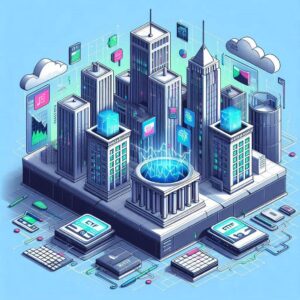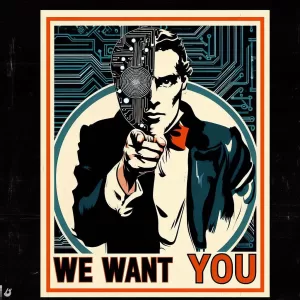The Impact of AI on Job Displacement: Navigating the Changing Landscape of Work

In the ever-evolving realm of technological advancements, artificial intelligence (AI) stands at the forefront, revolutionizing industries and reshaping the world of work. As AI capabilities continue to advance, concerns over job displacement have grown. In this article, we delve into the impact of AI on job displacement, examining the changing landscape of work and the data-driven insights that shed light on the potential consequences for individuals and the economy as a whole.
- The Rise of Automation: The integration of AI technologies, coupled with machine learning algorithms, has enabled automation across various industries. Tasks that were once exclusively performed by humans are now being taken over by AI-powered machines and software. From manufacturing and logistics to customer service and data analysis, automation has demonstrated its potential to streamline operations and improve efficiency.
- Job Displacement Trends: Data suggests that the adoption of AI and automation technologies has led to job displacement in certain sectors. According to a study by the World Economic Forum, it is estimated that by 2025, automation could displace approximately 85 million jobs worldwide, while creating 97 million new jobs that are more adapted to the new technological landscape.
- Industries Most Affected: Certain industries are more susceptible to job displacement due to the implementation of AI. Roles that involve repetitive and routine tasks, such as data entry, assembly line work, and customer support, are particularly vulnerable. Additionally, sectors such as transportation, retail, and manufacturing are experiencing significant disruptions as autonomous vehicles, cashier-less stores, and robotic automation become increasingly prevalent.
- Reskilling and Upskilling for the Future: To navigate the changing landscape of work, individuals must embrace reskilling and upskilling initiatives. As certain job roles become obsolete, new opportunities arise in emerging fields such as AI development, data analytics, and cybersecurity. Governments, educational institutions, and businesses must collaborate to provide training programs and resources to equip the workforce with the skills needed to thrive in an AI-driven economy.
- Job Creation and Economic Growth: While job displacement is a concern, it is important to recognize the potential for job creation and economic growth facilitated by AI technologies. As AI automates routine tasks, it frees up human workers to focus on more complex and creative endeavors. Moreover, the development, implementation, and maintenance of AI systems require a skilled workforce, driving demand for specialized roles and fostering new employment opportunities.
- Policy Considerations: The implications of job displacement caused by AI necessitate careful policy considerations. Governments and regulatory bodies must strive to strike a balance between fostering innovation and ensuring the protection of workers. Policies may include measures such as income support, job transition programs, and creating an enabling environment for the growth of new industries and entrepreneurship.
The impact of AI on job displacement is a multifaceted and complex issue. While data suggests that certain job roles are at risk, it is crucial to view AI as a transformative force that can create new opportunities and drive economic growth. Adapting to the changing landscape of work requires a proactive approach, emphasizing reskilling, upskilling, and policy frameworks that promote a smooth transition. By harnessing the power of AI while prioritizing the well-being of the workforce, we can navigate the challenges and embrace the potential of this transformative technology.






AI is going to impact many fields, some directly, like showcased here, in this article, where im guessing that the art work was produced at zero cost, by ai-image generator, and not by a human artist. content and digital art creators, are only a few, and the first, of those that will get affected by this